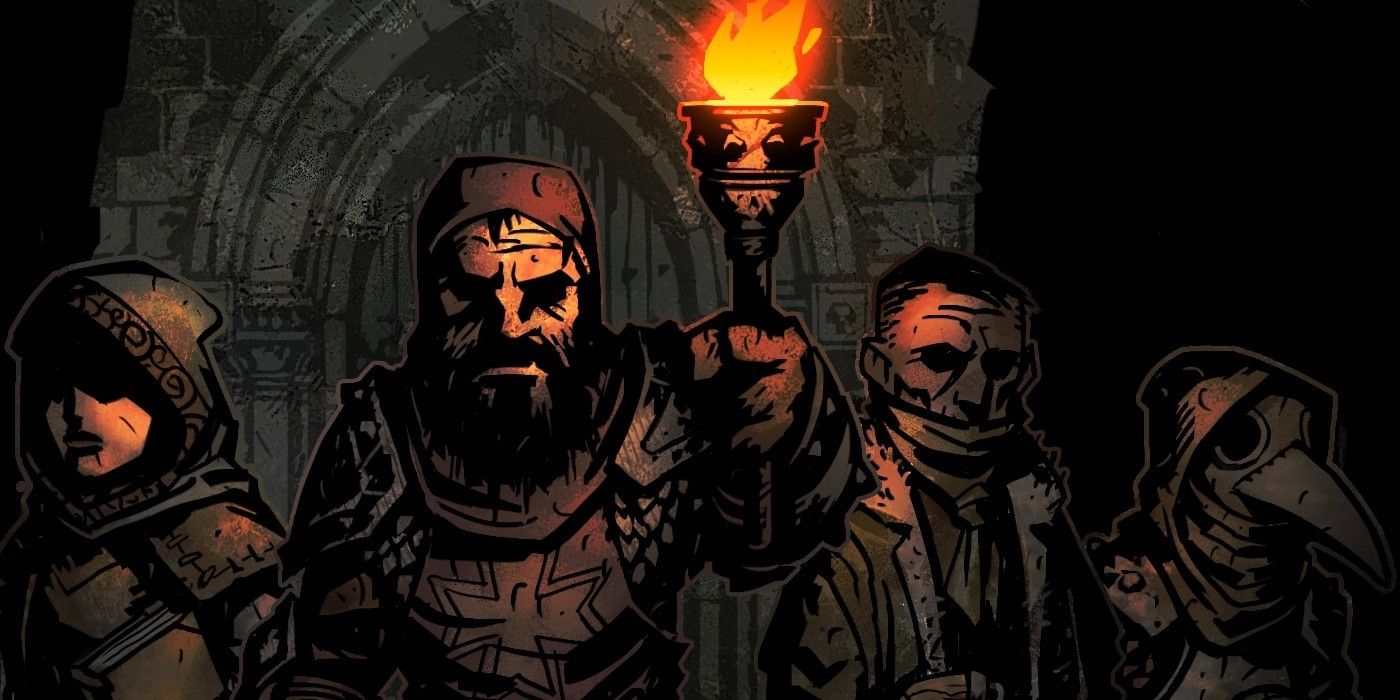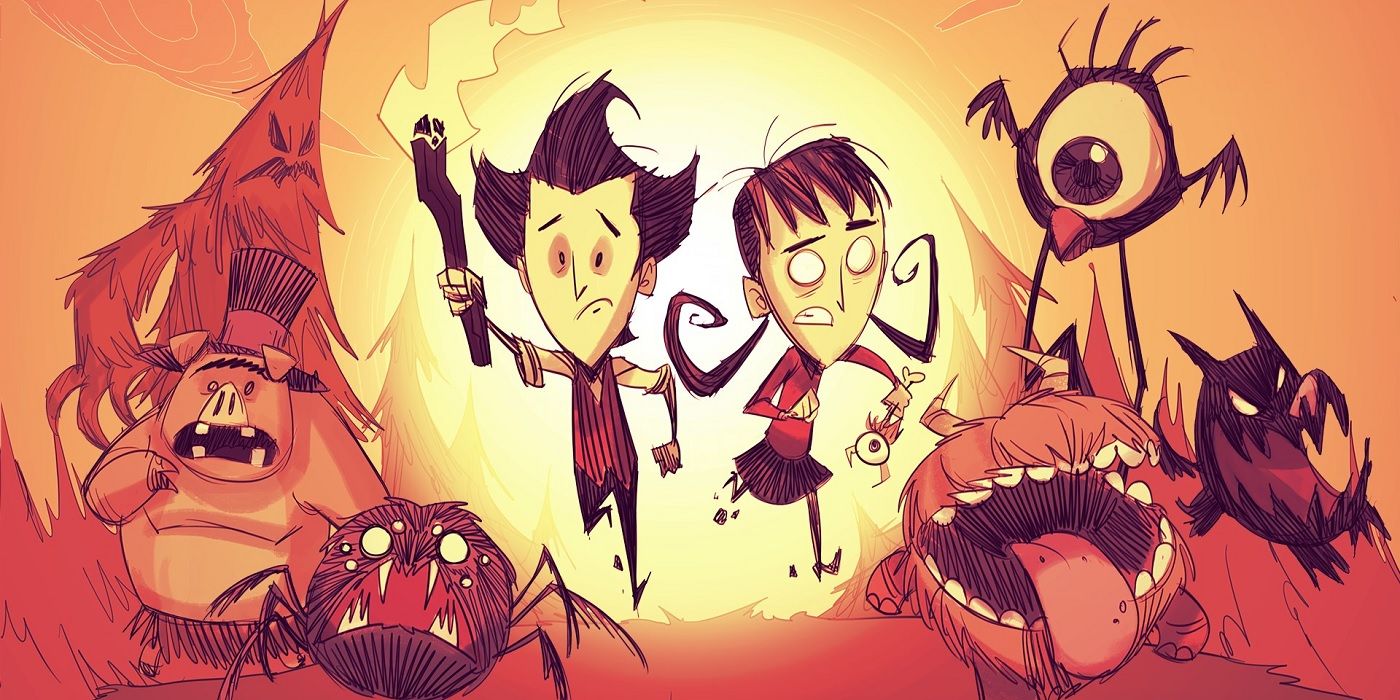How Darkest Dungeon and Other Psychological Horror Games Make Great Use of Sanity Mechanics
Video games often give their main protagonist a health bar, a finite resource representing their physical condition that the player must ensure remains above zero unless they want to face death. Some horror games also feature a sanity bar or similar mechanic, forcing the player to monitor their character’s psychological as well as bodily wellbeing.
At times, these sanity mechanics are implemented as nothing more than a second meter for the player to manage, but games like Darkest Dungeon have modified their gameplay in more creative ways to make players viscerally experience the deterioration of their avatars’ mental states.
RELATED: 20 Best Mods for Darkest Dungeon
How Darkest Dungeon Makes Players Lose Their Minds Along With Their Characters

Darkest Dungeon is a roguelike RPG, developed and published by Red Hook Studios in 2016 for the PC before being ported to consoles and iOS soon after. It received positive reviews, praised for its gothic setting and oppressive atmosphere, distinctive artwork, and punishing gameplay loop.
Its story sees the player learning that they have inherited an estate from a deceased ancestor, who had begun tunnelling beneath his grand manor only to release the buried horrors beneath it upon the unsuspecting town. The game requires the player to recruit, prepare, and then dispatch parties of dispensable heroes into these formidable catacombs to battle their grotesque denizens, which at times makes Darkest Dungeon feel like a management game. Players are expected to keep their roster of warriors trained, equipped, and healed between forays into the hellish depths.
However, the developer’s name is a clear reference to the game’s Lovecraftian inspirations, and like many other interactive works based upon the legendary writer’s horror stories, it exposes its protagonists to horrors that threaten to destroy their sanity as well as their physical bodies.
The characters will accumulate ailments as a result of the trauma they experience in the underground labyrinths, all of which will impact their performance during each mission. Warriors each have a stress meter alongside their health bar, and when this reaches a certain level, they can develop afflictions such as paranoia or hopelessness. With effects ranging from them disobeying the player's commands to sapping the rest of their party’s morale with repeated insults or negativity, the mechanic is memorable.
Some of these character quotes are particularly disturbing, with heroes teetering on the brink of insanity and often cackling maniacally or muttering about thousand-eyed cosmic horrors. The sense that a party is rapidly losing control of its situation and its composure, much like some of the most famous scenes in horror movies like Aliens, leads to the player mirroring their warriors’ feelings of desperation, and is hugely effective.
Ultimately, a character whose stress levels become critical will die of a heart attack, meaning that the game’s psychological horrors are just as meaningful as its physical threats. Indeed, heroes will often die during each quest, even those that a player has invested heavily in developing, and this cruel mechanic helps to further enhance the player’s own feelings of hopelessness and dejection. As they throw wave after wave of hapless warriors into Darkest Dungeon’s human meat grinder, they may begin to question the morality of their actions, as well as whether the overwhelming evil beneath the manor can ever be defeated. This, of course, is exactly what Red Hook wants.
RELATED: The 15 Hardest RPGs Ever Made, Ranked
Other Games That Make Innovative Use of Sanity Mechanics

Darkest Dungeon is not the only game to use sanity mechanics to nurture a sense of dread and confusion in its players. Other horror titles, and even non-horror releases that feature darker elements, have found devious ways to achieve this effect.
Klei Entertainment’s survival game Don’t Starve, released in 2013, features a sanity meter. This meter is constantly depleted as the isolated protagonist spends time alone in the dark or the rain, or consumes raw or rotten food. When it reaches low enough levels, the main character starts to hallucinate, experiencing disturbing visions. These can manifest as whispering sounds, distortions to the game’s musical jingles, or even monsters lurking at the edge of the screen. As the character’s mental health further deteriorates, these imagined creatures become corporeal and are able to attack the player.
A particularly ingenious application of this mechanic has the game’s cute and abundant rabbits – which, like in other survival games, are normally farmed for food – transform into fearful beings. These can in turn be harvested for resources that aid the construction of improbable, paranormal items and structures. The sense that the protagonist is being driven slowly and inexorably insane, and that nothing they are doing or experiencing is even real, is potent and immersive.
Amnesia: The Dark Descent was a popular horror title that also utilized sanity mechanics. Again, a meter is at the core of the gameplay, with time spent in darkness causing the protagonist’s sanity reserves to plummet at an alarming rate. Developer Frictional Games wanted to give the player a strong incentive to maintain their sanity stat.
As a result, it added a pulsating visual effect to the screen at lower sanity levels, accompanied by a nauseating sound effect that was created by cracking eggshells in front of a microphone. Players now not only had a clear indicator that they needed to address the issue, but a strong motivation to do so, with the visual and audio horror proving so stressful that they had to be scaled back to avoid making gamers feel physically unwell.
There are many other examples of excellent and creative use of sanity meters in games. In a famous masterstroke, Eternal Darkness: Sanity’s Requiem trolled players with a fake message declaring that their memory card had been wiped. It’s clear that the titles that use the mechanic best avoid simply adding a ‘second health bar’ for players to manage, and instead seek to toy with their players’ minds. It's therefore likely that horror developers will continue to push the boundaries of these mechanics as more and more immersive games are developed.
Meanwhile, Red Hook Studios has announced an upcoming sequel to Darkest Dungeon, and fans can certainly expect the game to test the psychological fortitude of its characters, as well as the players themselves, with a fresh batch of cosmic horror.
Darkest Dungeon is available now for iOS, Nintendo Switch, PC, PS4, and Xbox One.
MORE: Darkest Dungeon: Best Party Compositions
How Darkest Dungeon and Other Psychological Horror Games Make Great Use of Sanity Mechanics
Source: Pinay Diaries PH
Popular Posts
Popular Posts
WWE 2K22 DLC Plans Reportedly Ruined By Talent Releases

Nvidia Merger with Arm Officially Terminated


0 Comments